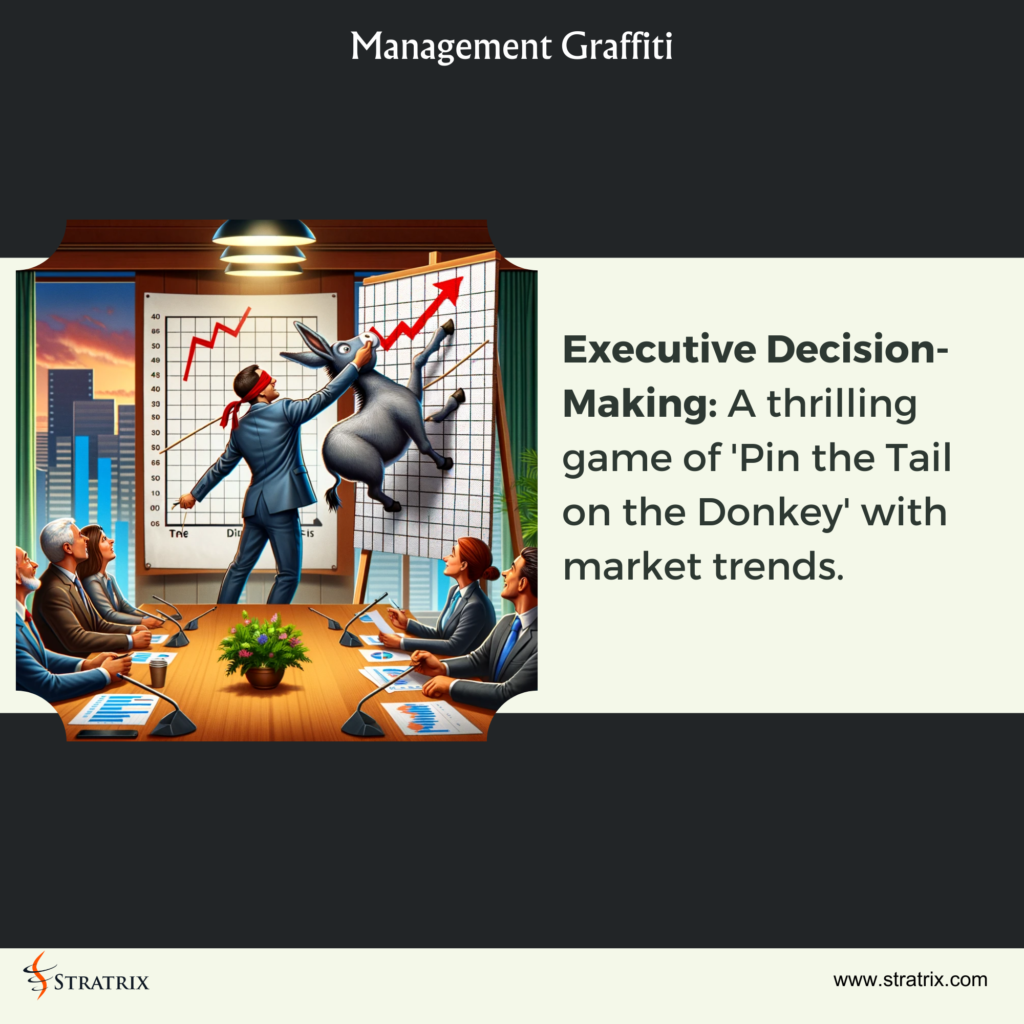Executive Decision-Making: Blindfolded and Aiming High?
Executive decision-making: where high stakes meet limited information. It often feels like a game of Pin the Tail on the Donkey, with market trends as the elusive target. Why the guesswork?
Time constraints, information overload, and fear of missing out can lead to impulsive decisions based on gut feelings rather than data-driven insights. It’s like trying to hit a moving target while wearing a blindfold.
Let’s Hit the Bullseye: Executive decision-making shouldn’t be a gamble. It should be a strategic process that maximizes opportunities and minimizes risks.
How to Make Informed Decisions, Not Blind Guesses:
- Data-Driven Insights: Base decisions on thorough research, analysis, and market intelligence.
- Clear Objectives: Define clear, measurable goals before making any decision.
- Diverse Perspectives: Seek input from a variety of stakeholders to get a well-rounded view of the situation.
- Scenario Planning: Anticipate potential outcomes and develop contingency plans for each scenario.
- Risk Assessment: Identify and assess potential risks associated with each decision.
- Cost-Benefit Analysis: Weigh the potential benefits against the costs and risks before making a decision.
- Decisive Action: Once a decision is made, act decisively and communicate it clearly to all stakeholders.
- Continuous Evaluation: Monitor the results of your decisions and make adjustments as needed.
Executive decision-making shouldn’t be a game of chance. By following a structured, data-driven approach, you can make informed decisions that drive your business forward. Ditch the blindfold and start aiming for success with confidence.


